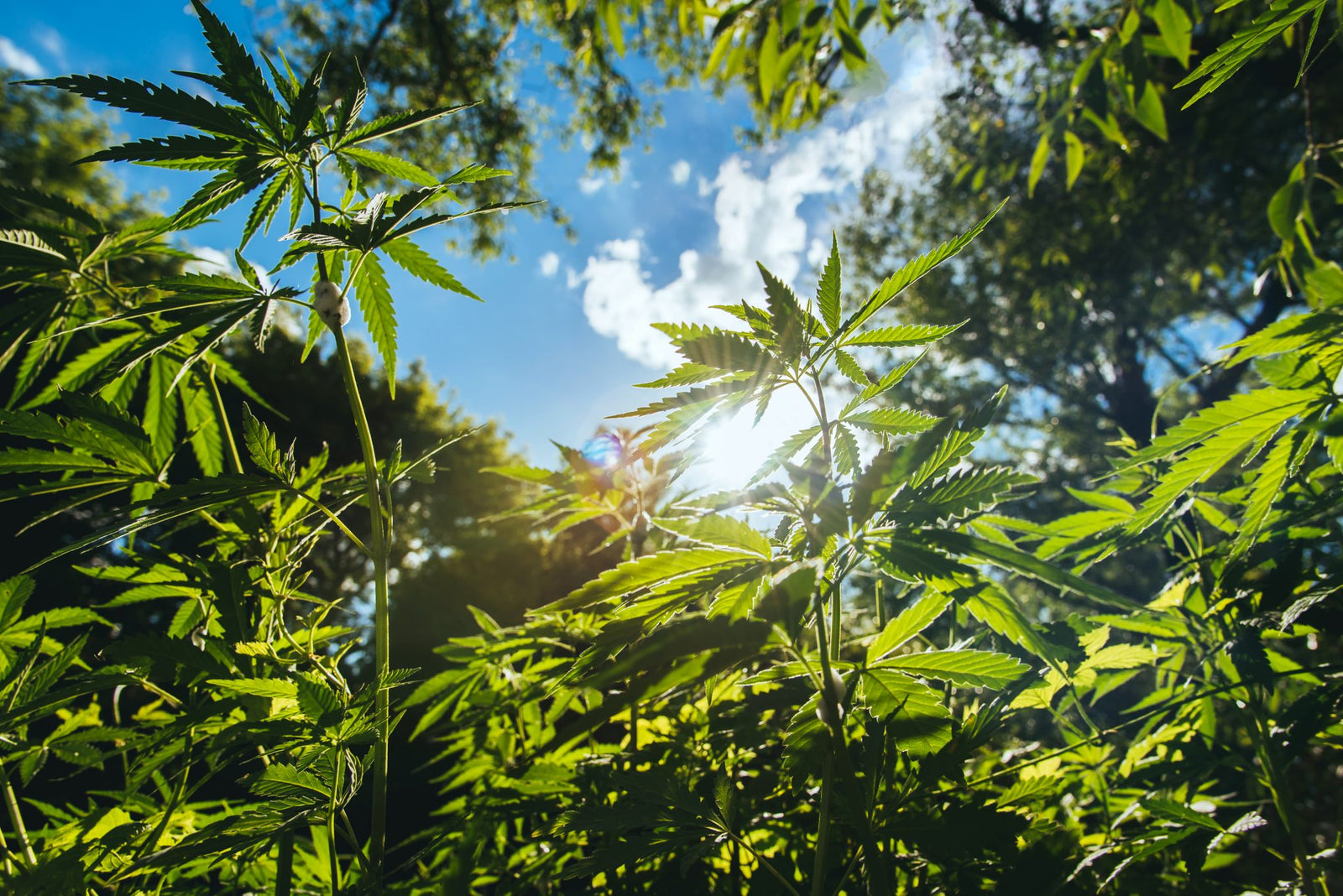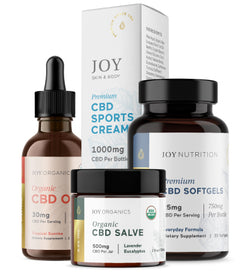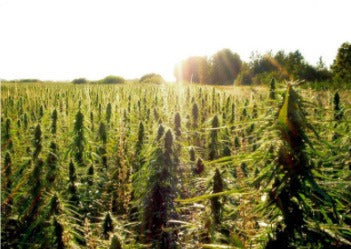
Essential Takeaways:
- The quality of hemp-based products is directly related to the quality and care with which they were grown.
- Several CBD products on the market today are produced from hemp grown in countries where there are few regulations regarding cultivation practices.
- Hemp absorbs everything from the soil in which it’s grown. Soil quality affects the quality of CBD products.
When it comes to choosing CBD products, you have options. We urge you to keep in mind that not all CBD products are created equal. U.S. grown hemp CBD products can be worlds away from some of the CBD products made from hemp grown in other countries. We can’t stress enough how important it is to make sure that your CBD products are made with U.S. grown hemp. Here’s why.
Why is U.S. Grown Hemp Is So Important When It Comes To CBD?
It’s no secret that the CBD industry is already huge and keeps getting bigger. The ever-expanding CBD market is projected to be worth roughly $20 billion by 2024, making it a big business that everyone wants to be a part of.
Hemp production has expanded exponentially in the U.S. since the Farm Bill passed into law, but several CBD companies in the United States still source the raw hemp used to make their products from overseas. Hemp production is a large market in Europe and Asia.
Hemp production in China is booming, and two regions in the country alone are responsible for producing one third of the world’s hemp supply. While the majority of this hemp is sold for textiles, the rest is used for CBD, food, supplements and cosmetics. In 2017, Chinese hemp sales totaled $1 billion. Hemp-derived CBD accounted for $53 million in sales, and that figure is expected to quadruple this year.
When it comes to hemp used for making CBD, the quality of the final product is largely due to the manner in which the hemp was cultivated. With hemp grown overseas, there’s no guarantee regarding how it was grown. Let’s take a look at why growing conditions are so important when it comes to high-quality CBD products.
How Hemp Grows
Hemp is one of the most hardy plants in the world. It will grow pretty much anywhere, including some of the harshest environments on the planet. Hemp requires little to no use of herbicides and pesticides when grown in proper conditions.
Hemp is also one of the best plants for cleaning up environmental toxins. In a process known as phytoremediation, hemp’s roots absorb toxins present in the soil. Hemp is so adept at the process of phytoremediation that it was planted at the Chernobyl nuclear disaster site to pull radioactive material out of the land.
While hemp’s efficiency at phytoremediation is no doubt amazing, it also means that there are some risks involved in sourcing hemp for CBD that wasn’t grown in the most optimal environment possible. When hemp is sourced from overseas, it’s impossible to know what the soil conditions were like. Because hemp absorbs everything present in the surrounding soil, these substances can also end up in hemp extract.
Think about it this way: People use CBD products for the wellness benefits that this cannabinoid is known to promote. The last thing anyone wants is CBD oil that contains toxins like pesticides and chemicals that could negatively impact their health. When you don’t know how or where the hemp was grown to create your CBD products, these are potential risks.
How Hemp Grows In The U.S.
U.S. grown hemp is a bit different from that which is grown overseas. When the 2014 Farm Bill was established, the individuals involved in pilot programs for hemp cultivation were required to work with their state’s Department of Agriculture and follow strict guidelines.
While U.S. grown hemp production quadrupled in 2019 after the passing of the Farm Bill, hemp farmers must still comply with the laws set forth by their state’s agricultural department.
In October 2019, the USDA established the U.S. Domestic Hemp Production Program that created the regulatory framework for U.S. grown hemp as defined by the Farm Bill.
U.S. Secretary of Agriculture Sonny Perdue expressed his excitement for the “new economic opportunities” now available for farmers interested in growing hemp in the United States.
“We have had teams operating with all hands-on-deck to develop a regulatory framework that meets Congressional intent while seeking to provide a fair, consistent, and science-based process for states, tribes, and individual producers who want to participate in this program,” said Perdue.
U.S. grown hemp is subject to stricter standards when compared to some of the hemp grown overseas. Part of the new framework that was set in place by the USDA includes sampling and testing procedures that provide additional information for hemp testing in the United States.
Finding CBD products that are made from hemp grown in the best conditions all comes down to brand transparency. While new regulations are being set in place, the CBD industry is still largely unregulated. A company can claim they have the highest-quality products on the market, but without regulations to back up these claims, quality can still be questionable.
U.S. Grown Hemp and Brand Transparency
The best high-quality CBD products begin with quality U.S. grown hemp. How do you know if the company you’re considering sources their CBD products from hemp that was grown in the United States? The brands you can trust should offer this information on their website. If they don’t, simply contact the brand you’re considering purchasing products from and ask them.
Hemp Cultivation Conditions
At Joy Organics, we’ve been committed to quality since day one and we stand by this commitment 100%. We use U.S. grown hemp cultivated sustainably in nutrient-rich soil. Our farmers operate under strict guidelines and employ state-of-the-art farming practices to ensure a healthy growth cycle and abundant harvest. We believe that this not only helps enhance the quality of our CBD products, but also ensures that our products are safe, regulated and unsurpassed in consistency and potency.
There are several other CBD companies that understand just how important U.S. grown hemp is and are doing the same. You’ll know them when you come across them. These are the companies that take pride in letting potential consumers know where their hemp was grown, as well as how their farmers are growing it. Any company that doesn’t offer this information on their website is not likely to be using U.S. grown hemp to create the products they sell.
Most U.S. grown hemp is cultivated in accordance with state agricultural programs, and the CBD companies that truly care about the products they offer will be totally transparent about their process and farming methods. If they aren’t, we encourage you to find a company that is.
Third Party Lab Test Results
The most reputable companies that source U.S. grown hemp to create their products aren’t just straightforward about how their hemp was grown. They also provide the independent lab test results that prove their products are free from potential contaminants.
Third party lab test results aren’t required by law in order to sell CBD. Therefore, the companies that offer third party lab results on the products made from U.S. grown hemp are going above and beyond what is required. These are the ones you can trust.
What exactly do these lab tests look for?
In addition to cannabinoid content—including how much CBD your product contains and the presence or lack of THC—labs also test for the potential toxins that could be present in your product. Remember, hemp soaks up everything from the soil in which it’s planted, including pesticides and other chemicals that may be present.
When a company offers lab test results, they are typically in the form of a Certificate of Analysis (COA) that may be posted on the company’s website. Click here to see a sample of the COA for one batch of our natural-flavored CBD tincture.
A COA should indicate the presence or lack of any pesticides, herbicides, residual solvents and heavy metals. Our test results, for example, include:
- Testing for 10 different pesticides.
- Testing for 7 residual solvents.
- Testing for 4 heavy metals (cadmium, lead, arsenic and mercury).
We believe that testing products for contaminants is a must. When hemp isn’t grown domestically, it can be almost impossible to know the conditions in which it was grown, and without third party lab test results, your CBD oil could contain any pesticides or heavy metals that were present during cultivation. When it comes to knowing what’s in your CBD, we can’t stress enough how important it is to ensure that your products come with third party lab test results.
Final Thoughts on U.S. Grown Hemp
The quality of a CBD product is directly related to the quality and care that went into the hemp’s cultivation. When it comes to hemp grown overseas, it’s harder to truly know what you’re getting. If you’re interested in the highest quality CBD products you can find, insist on products that are produced with U.S. grown hemp.
Thanks for reading! To show how much we appreciate you, we’re going to give you 16% off your next order. Just use code READER16 at checkout!
Hannah Smith is Joy Organics Director of Communications. She is driven by her passion for providing clear and accessible wellness and CBD education. In 2015, she received her BA in Media, Culture and the Arts from The King’s College in New York City and before Joy Organics, worked as writer and photographer in the Middle East and North Africa. Her work has been featured on Forbes, Vice, Vox, Denver Post, and the Coloradoan.









Join In On The Conversation
Your email address will not be published. Required fields are marked *